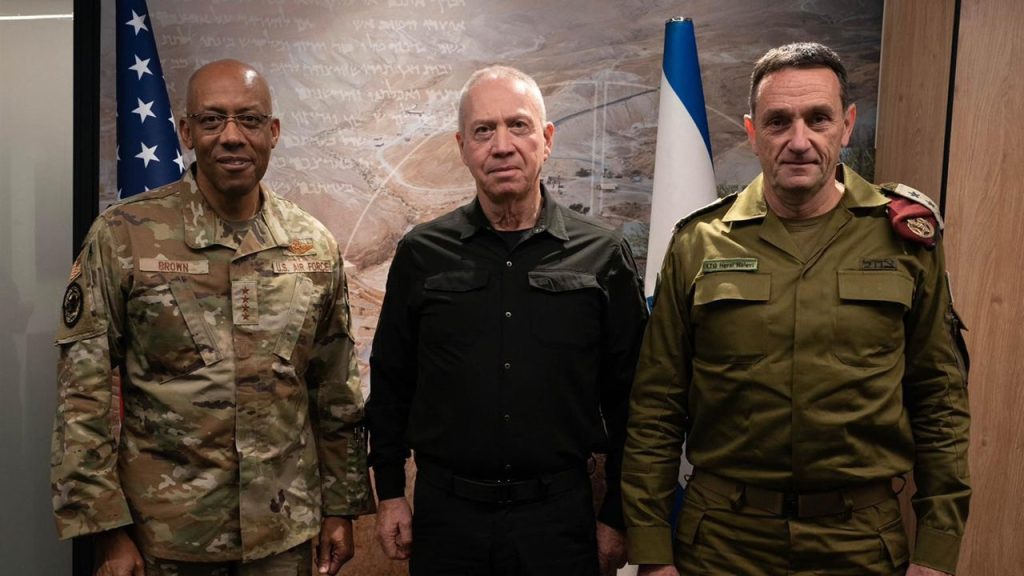Israel’s Defense Minister Yoav Gallant met with U.S. Chairman of the Joint Chiefs of Staff Gen. Charles Q. Brown to discuss the escalating aggression from Iran, particularly in the form of threats from Hezbollah in the north and Hamas in the south. Despite U.S. efforts to broker a cease-fire deal with Hamas, the terrorist group has not agreed to any terms as long as Israeli forces are present in security corridors in Gaza. Details of the cease-fire talks remain unclear, but Israel’s primary goals include dismantling Hamas, securing the return of hostages taken following attacks, and improving security along the northern border to allow communities to return safely to their homes.
Since October 7th, around 40,000 Palestinians have reportedly been killed in Gaza, along with hundreds of Israeli soldiers and civilians. Security officials believe that the biggest threat Israel faces is in the north, where it frequently exchanges missile and drone fire with Hezbollah. The meeting between Brown and Gallant came after Hezbollah launched hundreds of rockets and drones at northern Israeli military positions, prompting Israel to retaliate with airstrikes targeting Hezbollah strongholds in southern Lebanon. The exchange resulted in casualties on both sides, but the assault was relatively short-lived.
Despite the exchange of fire between Israel and Hezbollah, progress continues to be made in the ceasefire talks with Hamas. White House National Security Communications Advisor John Kirby affirmed that the talks are still considered constructive, despite the recent hostilities. Iran’s Major General Mohammad Bagheri issued a warning that revenge against Israel is inevitable, signaling that the threat posed by Iran has not diminished. The U.S. and its partners are continuing to work to secure a cease-fire deal, emphasizing the urgency of the situation.
The situation in the Middle East remains tense, with ongoing threats from Iran, Hezbollah, and Hamas. Israel is facing significant challenges in dealing with these threats, highlighting the need for collaboration and groundbreaking capabilities to counter aggression. The recent exchange of fire between Israel and Hezbollah underscored the volatility in the region, but efforts to reach a cease-fire deal with Hamas are still ongoing. The international community is closely monitoring the situation and working to prevent further escalation.
The conflict in the Middle East has caused significant loss of life and raised concerns about the potential for a broader war. Israel’s efforts to protect its citizens and secure its borders have led to retaliatory attacks from Hezbollah and Hamas, further complicating the situation. Despite the challenges, world leaders are committed to finding a peaceful resolution to the conflict and preventing further bloodshed. The stakes are high, and all parties involved must work together to achieve stability and security in the region. The coming days and weeks will be critical in determining the path forward for the Middle East and the prospects for peace in the region.


